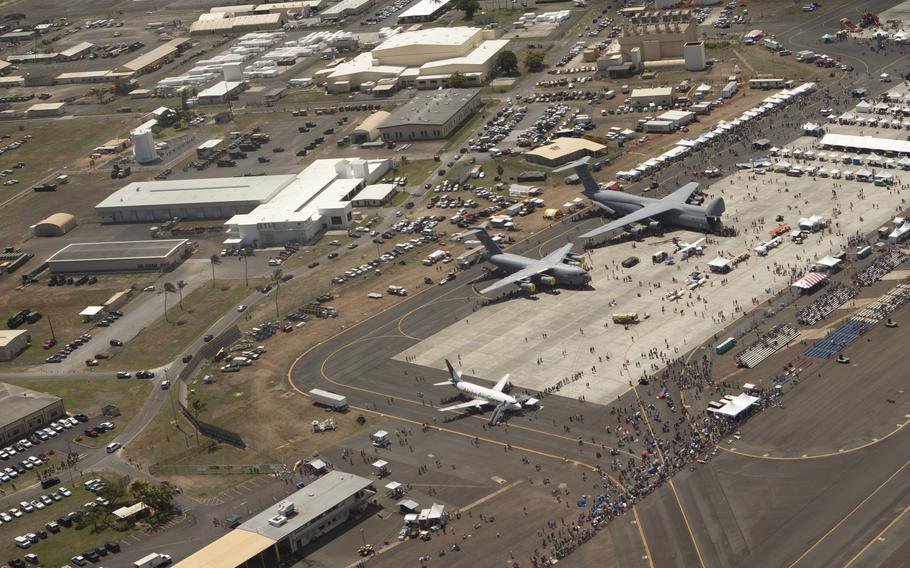
The environmental assessment of a Marine Corps plan to improve facilities at Marine Corps Base Hawaii, including the installation at Kaneohe Bay, shown here Sept. 30, 2012, is available for public comment. (Kevin Jones/U.S. Marine Corps)
FORT SHAFTER, Hawaii - The Marine Corps is seeking public comment on a draft environmental assessment for plans to modernize equipment, facilities and training in Hawaii to prepare its ground forces for expeditionary-style warfare in the Pacific.
“The proposed equipment changes are evolutions of existing equipment and combat capabilities and have operational characteristics similar to those historically used by Marine Corps ground forces in Hawai’i,” the assessment states.
The modernization would not change the number of Marine Corps ground forces in Hawaii, the assessment states.
The document concludes that the modernization would not adversely affect levels of noise, air quality, water and cultural resources, public health or transportation.
Construction of needed facilities and upgrading of equipment would happen over an eight-year period, with completion expected in 2031.
All construction would be confined to within Marine Corps Base Hawaii.
For example, the Marines would train with the Navy-Marine Expeditionary Ship Interdiction System, or NEMESIS, at the Marine base at Kaneohe Bay. The system consists of a Naval Strike Missile carrier atop a joint light tactical vehicle. The Marines plan to deploy two platoons of nine launchers each, according to the draft plan.
“Compared to cannon artillery training previously conducted on military training ranges in Hawai‘i, NMESIS training would involve a smaller transportation vehicle (JLTV vs 7-ton truck), a smaller number of personnel and equipment per training cycle, a smaller footprint, and would not involve ‘live fire’ of the weapon system on O‘ahu,” the draft states.
None of the facilities proposed to be renovated or demolished under the proposed plan are listed or eligible for listing in the National Register of Historic Places, the assessment states.
“In developing facilities alternatives, the Marine Corps sought to maximize reuse and renovation of existing facilities and minimize the need for new construction,” the assessment states.
Training would continue on areas controlled by the Marine Corps and Army in the state, and “modernized equipment would not increase activity or impose new or greater environmental impacts on these training ranges,” the assessment states.
The Marine Corps is in the process of redirecting its mission “from sustained operations ashore to great-power and peer-level competition, with special emphasis on the Pacific,” the assessment states.
“This shift in mission, along with technological advancements in equipment sets, requires adjustments in how the Marine Corps organizes, trains, and equips its force,” the assessment states.
Marine Corps units in Hawaii and Okinawa are already in the midst restructuring as part of Force Design 2030, which is aimed at creating an agile force more adept at fighting in the kinds of contested maritime spaces that would be central in a conflict with China.
The draft may be found at www.mcbhawaii.marines.mil.
Comments can be submitted by mail to Peer Amble, Stantec GS Inc., 737 Bishop St., Suite 3050, Honolulu HI 96813 or emailed to MCBH-EA@stantecgs.com.
The public comment period ends Jan. 25.